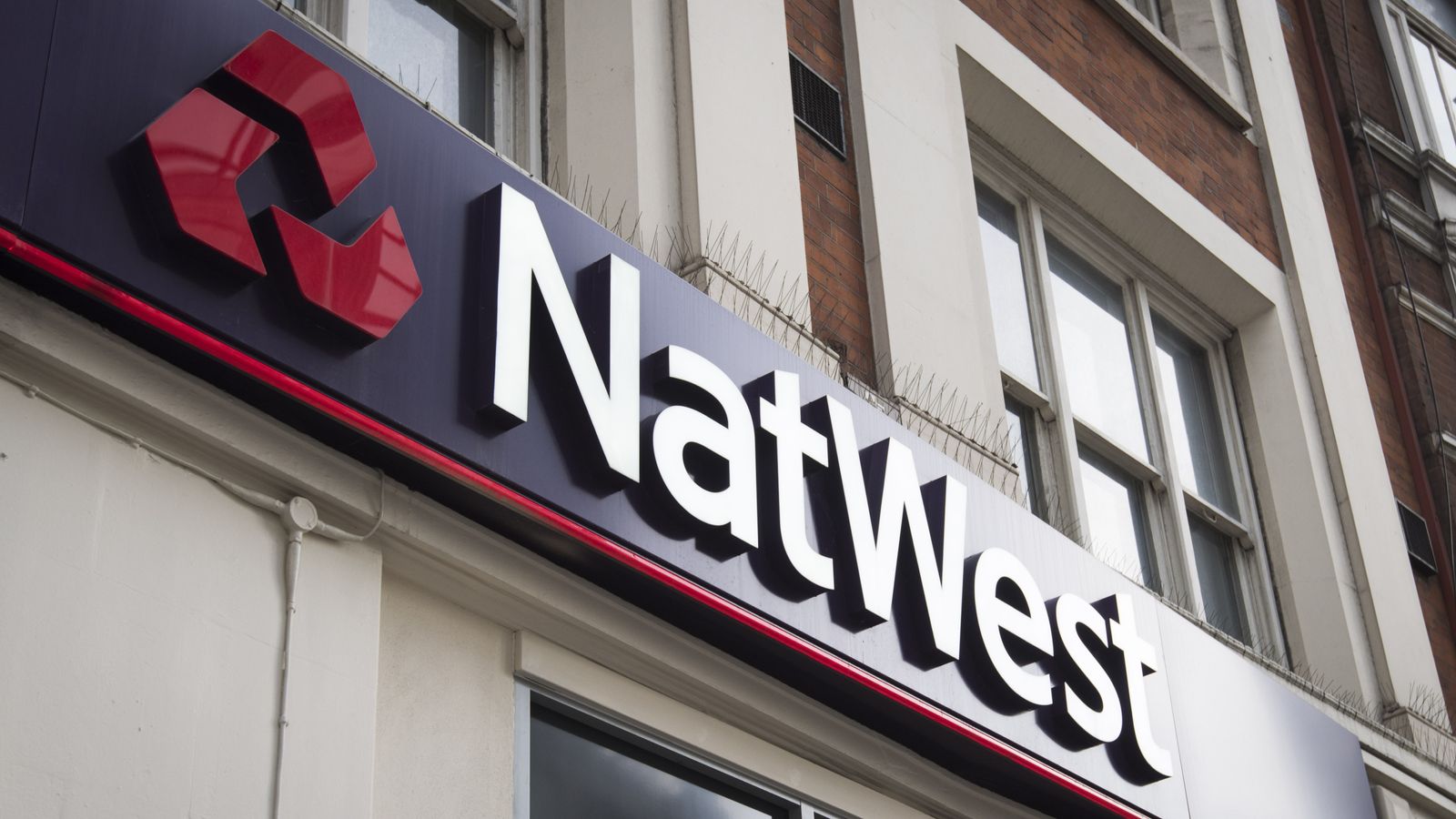NatWest beats profit expectations with 50% hike on last year

NatWest has beaten expectations by recording a pre-tax profit of £1.8bn in the first three months of the year.
This is well ahead of forecasts by analysts of £1.6bn for the quarter and more than 50% higher than the £1.2bn recorded this time last year.
It follows rival bank Barclays posting a better-than-expected profit and its largest in at least 12 years.
NatWest Group, which includes the Royal Bank of Scotland and Ulster Bank, also saw its total income surge by more than a third over the period, bolstered by higher interest rates which makes it more expensive to borrow.
However, it said nearly £20bn was withdrawn from accounts during the period, which it partly blamed on its exit from the Republic of Ireland this year, following the decision to shut its entire Ulster Bank branch network in the region.
When this was excluded, £11bn was taken out of the bank, or 2.6% of its total customer deposits, which was put down to higher tax payments, competition for better savings rates and market volatility.
Read more:
NatWest chief gets huge bonus
All 43 branches shutting across UK
It also reported a growing number of people using its fixed-term savings products in the first quarter as people looked to make the most of higher interest rates.
Chief executive Alison Rose said: “NatWest Group’s strong performance in the first quarter of 2023 is underpinned by our robust balance sheet, our high levels of capital and liquidity, and our well-diversified loan book.
Advertisement
“Through a period of significant disruption and uncertainty, we continue to stand alongside the people, families and businesses we serve, providing targeted support and growing our lending responsibly.
“Our disciplined and consistent approach to risk management means that arrears and impairments remain low.
“By monitoring customer behaviour and looking closely for signs of financial distress, we are able to put in place proactive measures to help those who are struggling right now and those who are worried about the future.”
The bank’s results demonstrate resilience in the face of high inflation, which squeezes household budgets and raises the
risks of borrowers falling behind on loan repayments.
High prices also increase the chances of Bank of England interest rates staying higher for longer, pushing up borrowing costs and further curbing consumer spending.